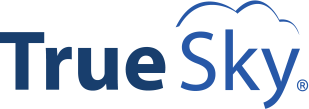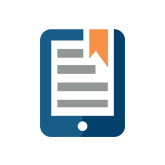3 Ways to Use Analytics to Improve Your Bottom Line

As technology has matured and evolved, the amount of data available to businesses has reached truly epic proportions.
Take social data, for example. Internet users freely share all kinds of information about themselves, from their shoe size, to where they live, to where they just finished shopping. All of this is a marketing goldmine for consumer-facing companies.
A similar data revolution has been taking place internally in businesses, as well. As our software systems become more capable of capturing, analyzing, and reporting on data, companies can gain stronger decision-making abilities than ever before – but only if they’re prepared to take advantage of the available information.
Here are 3 ways your company can better use analytics to improve your bottom line and make more informed business decisions.
Build a business culture that values analytics and data capture.
If your colleagues and employees are already fully committed to gaining what they can from analytics, then this part of the job is already done.
However, if your company is still operating in a more reactive mode – or if your colleagues profess to be on board with an analytics-based strategic approach, but haven’t followed through – then you may have to become your company’s analytics evangelist.
How do you do this? One way to start is by asking members of your finance team to think of a single, concrete example of a time that using analytics helped them do their jobs better. Maybe one of your department heads was able to more accurately forecast their department’s financial needs.
You can branch out to other departments, too – perhaps one of your salespeople generated 5 additional leads for the month by paying closer attention to website traffic.
These specific stories will go a lot farther toward convincing your company to invest in analytics than pure statistics.
Treat your data as information, not just numbers.
When you look at your forecast or budget, initially it looks like a math problem. You want your income to be greater than your expenses, you want your profits to be higher than last year’s, or you want to spend less on materials this quarter than you did last quarter.
If you start treating these numbers as information that you can use to learn about your business, then you’re able to gain a lot more actionable insight from them. If you’re using a budgeting and forecasting solution like True Sky, this is easy to do.
For example, how do external events affect your business’s performance? By setting up different budget scenarios, which True Sky allows you to easily do, you can forecast how a decrease in stock prices might affect your financial results. Armed with this information, you can then prepare for this potential issue proactively and strategically, rather than reactively.
Add context wherever possible.
It’s one thing for you as CFO to understand and take advantage of the power of analytics. It’s another to get your finance team on board.
One way to do this is to start adding context to budget entries when you can. That means including information about the how, why, and what whenever possible. Maybe you have a document that spells out how you think a recent economic uptick will influence sales. Maybe one of your team members has explanations for expenses related to a meeting with a potential business partner.
If you can add these documents, attachments, and comments directly into your budget, they’ll be easily accessible to everyone who reviews the budget. This ability is built in to True Sky, so users can attach what is required to explain, clarify, or further document specific data entries.
This will not only help your colleagues and employees better understand the data being analyzed. It will also cut down on the back-and-forth questioning that can take up so much time.
To learn more about the unique features that True Sky can bring to your budgeting and forecasting process, read this chart.



